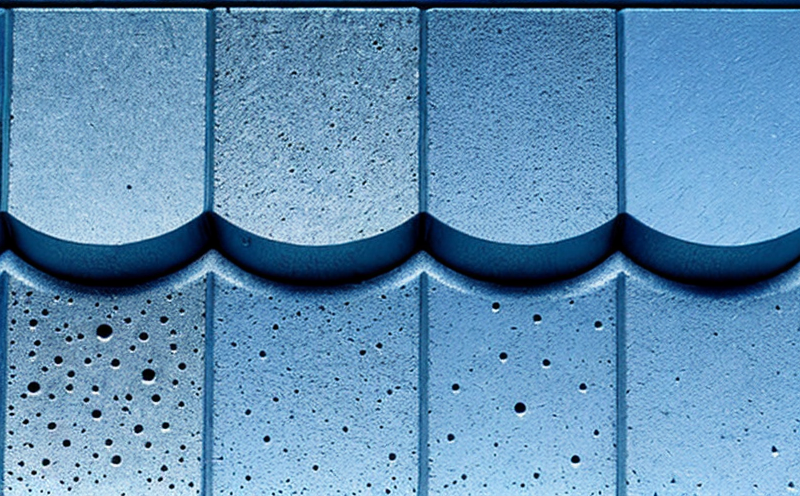Surface characterization of materials for wear and tear resistance in medical devices
Unlocking the Secret to Medical Device Durability Surface Characterization for Wear and Tear Resistance
In the highly regulated and competitive world of medical device manufacturing, ensuring the quality and reliability of products is paramount. One critical aspect that often goes unnoticed is the surface characterization of materials used in these devices. The wear and tear resistance of a material can significantly impact the performance, safety, and lifespan of medical equipment, making it an essential factor for businesses to consider.
At Eurolab, our laboratory services cater to this growing concern by providing expert analysis and testing solutions for surface characterization of materials in medical devices. By understanding the intricacies of wear and tear resistance, manufacturers can minimize product failures, reduce downtime, and ultimately save costs.
Why is Surface Characterization of Materials for Wear and Tear Resistance Essential?
In medical device development, materials play a crucial role in ensuring patient safety and treatment efficacy. The surface properties of these materials are particularly critical as they come into contact with bodily tissues, fluids, or other components within the device itself. Even slight changes in material properties can lead to catastrophic consequences, including infection, inflammation, or even device failure.
The importance of wear and tear resistance cannot be overstated. Medical devices must withstand repeated use, exposure to various environments, and interaction with diverse biological systems without compromising their performance or structure. Manufacturers that neglect this aspect risk facing
Increased product returns Wear and tear can lead to premature failures, resulting in costly recalls, replacements, or even legal liabilities.
Decreased patient safety Inadequate surface characterization can contribute to adverse events, such as allergic reactions or infections, which compromise patient well-being and trust in medical devices.
Compromised regulatory compliance Non-compliance with industry standards (e.g., ISO 10993) due to inadequate wear and tear resistance analysis may lead to fines, reputational damage, and loss of market share.
The Benefits of Surface Characterization for Wear and Tear Resistance
Our surface characterization services at Eurolab provide manufacturers with a comprehensive understanding of material properties, enabling informed design decisions and optimized product performance. The advantages of working with us include
Accurate material selection Our expert analysis ensures the right materials are chosen for your medical device, minimizing wear and tear risks.
Predictive maintenance Understanding wear patterns enables proactive maintenance scheduling, reducing downtime and associated costs.
Improved patient outcomes By selecting durable materials, manufacturers can reduce the risk of adverse events and ensure safer treatment options for patients.
Enhanced product reliability Our testing solutions provide a clear picture of material behavior under various conditions, leading to more reliable medical devices.
Compliance with industry standards Our laboratory is equipped to conduct tests that meet or exceed regulatory requirements (e.g., ISO 10993), ensuring your products meet the highest standards.
QA Section Addressing Common Questions and Concerns
We understand that surface characterization of materials for wear and tear resistance may seem daunting, especially in industries with strict regulations. To alleviate concerns, weve compiled answers to frequently asked questions
Q1 What types of medical devices require surface characterization?
A1 Any device coming into contact with bodily tissues or fluids requires evaluation. This includes implantable devices (e.g., stents, pacemakers), orthopedic implants, surgical instruments, and more.
Q2 How do you ensure compliance with industry standards?
A2 Our laboratory is equipped to conduct tests that meet or exceed regulatory requirements, such as ISO We also work closely with clients to understand specific needs and tailor our services accordingly.
Q3 Can surface characterization be performed on a variety of materials?
A3 Yes! Our experts can analyze various materials, including metals (e.g., titanium, stainless steel), ceramics, polymers, and composites.
Q4 What are the typical testing procedures involved in surface characterization?
A4 Our laboratory employs advanced techniques such as wear testing, scratch resistance analysis, contact angle measurements, and more to evaluate material properties under various conditions.
Conclusion
The world of medical device manufacturing is complex, demanding, and constantly evolving. As a trusted partner, Eurolab offers expert surface characterization services that empower manufacturers to ensure their products are safe, reliable, and compliant with industry standards.
Dont compromise on patient safety or regulatory compliance; choose the best solution for your medical devices. Contact us today to discover how our surface characterization of materials for wear and tear resistance can enhance your products durability, performance, and overall value in the market.
At Eurolab, were committed to providing cutting-edge testing solutions that fuel innovation and protect patient well-being. Partner with us and unlock the secret to medical device durability request a consultation today!




